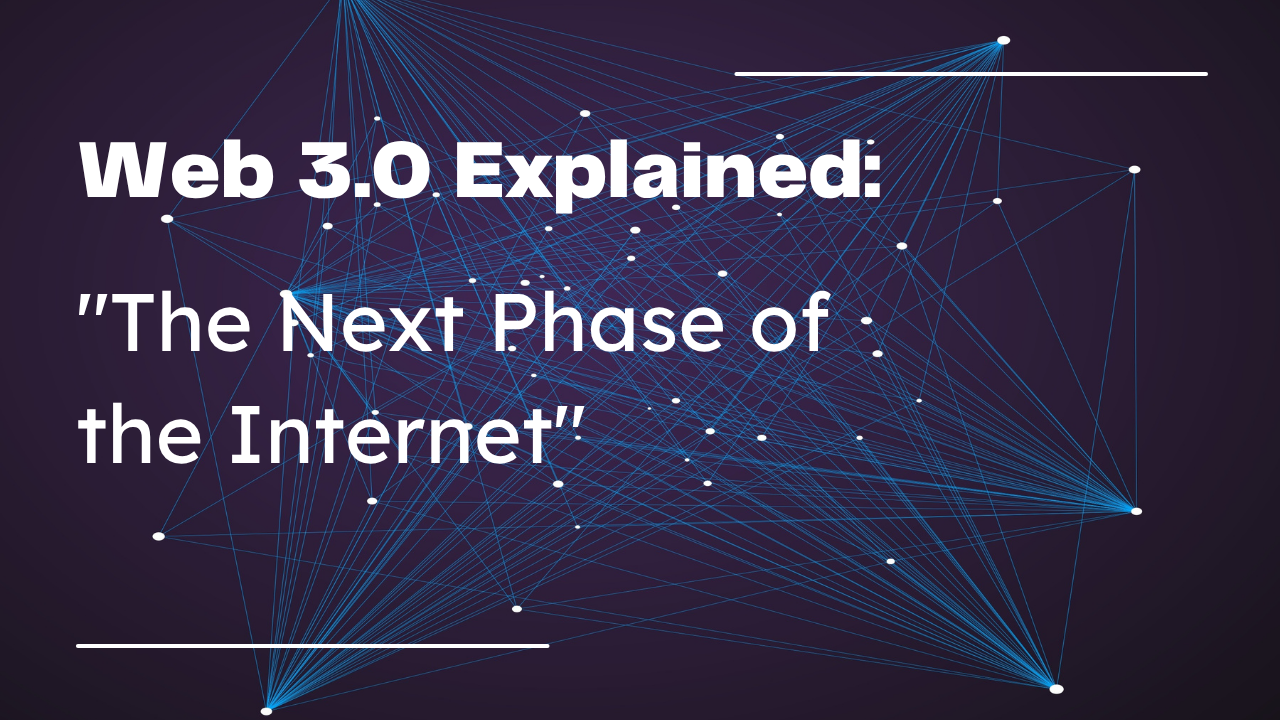A lot has evolved with the internet since the moment it originally developed out. There have been huge changes at every level of the web’s history, from static web pages to interactive platforms that fuel our daily lives. Web 3.0, which is sometimes called the next phase of the internet, is the next big change we are about to see. But what is the concept of Web 3.0, and just how will it impact on the way we use the internet?
In this post, we’ll explain what Web 3.0 is, look at its main technologies, compare it to older versions of the web, and talk about what it implies for the future of life online.
A Short History: From Web 1.0 to Web 3.0
To understand Web 3.0 better, it’s beneficial to think about how web browsing has evolved all over time:
- You could just read web sites; they weren’t engaging.
- Little contact with users
- Website owners have full control over everything.
- Content that is interactive and made by users, including social media, blogs, and forums
- Facebook, Google, and YouTube are the most popular centralised platforms.
- Making money via collecting data and showing ads
- Web 3.0, or the Decentralised Web, is starting to gather traction now.
- It is all about decentralisation, user ownership, and systems that don’t need trust.
- Blockchain, AI, and semantic web technologies make it work.
- The goal is to give users back control instead of centralised groups.
What is Web 3.0?
Web 3.0 is a new version of the internet that focusses on decentralisation, privacy, interoperability, and giving users more power. It wants to get rid of the people that control the current internet (such huge tech firms) and make the online more open, safe, and smart.
Some important things about Web 3.0 are:
- Blockchain-based decentralised apps (dApps)
- Data held by users that is safely stored across many networks.
- Platforms that work together so that data and services can be used across apps
- AI and machine learning make user experiences more personalised and intelligent.
- Token-based economies that provide people rewards directly, like cryptocurrencies
Main Technologies Driving the Internet 3.0
Web 3.0 is built on a number of cutting-edge technologies:
-
Decentralisation and Blockchain
Web 3.0 is built on blockchain. It keeps a safe, open record of transactions across many platforms, so there is no need for central authorities. Effect: Allows transactions between peers Makes ensuring that data can’t be changed and is clear Supports DAOs, NFTs, and decentralised finance (DeFi)
-
Contracts that are smart
When certain conditions are fulfilled, these agreements are saved on the blockchain and instantly carry out tasks. Effect: Power dApps without any human help Make contracts, financial services, and digital rights automatic. -
AI (artificial intelligence)
AI in Web 3.0 looks at huge volumes of data to give you better search results, better content recommendations, and help you make smarter decisions. -
Semantic Web:
This is an idea that organises data so that machines can grasp its context and meaning, which makes it easier for systems to talk to one other.
What it means:
Better precision in search
Better user experience on all platforms -
Computing at the Edge
Instead than relying on a few centrally located computers, edge computing brings information handling nearer to the end user.
Effect:
Faster times to respond
More safety and privacy
What Web 3.0 Will Do to the Internet
- More control over data and users
Facebook and Google make money from user data in Web 2.0. Web 3.0 changes this approach by letting people own and make money from their own data using blockchain wallets and tokens. - Better safety and privacy
By employing distributed storage and encoding, users may choose who may view their data. No one person or group may use or leak your info. - New ways of doing business
Web 3.0 brings token-based economies, where people get rewards for being part of networks. For instance, creators on a decentralised video network may get tokens directly from people who watch their videos. - Not being able to censor
It’s difficult to censor content that is housed on decentralised networks, which protects free speech and access to information even in places where it is limited. - A better digital identity
Web 3.0 lets people have self-sovereign identities, which means they can manage their own credentials without needing to check in through a third party, like Google or Facebook.
Problems with Web 3.0 Adoption
There are still some problems that need to be solved before Web 3.0 can become a reality: Scalability: Blockchain networks need to be able to handle large-scale applications well. Knowledge of of the User: Many digital applications are still tougher to operate than traditional platforms.
Regulation: Governments are trying to figure out how to govern cryptocurrencies, NFTs, and decentralised platforms.
Energy need: Some blockchain models, like proof-of-work, need a lot of energy, whereas newer ones, such proof-of-stake, use less.
Final thoughts
Web 3.0 is a big step forward for the internet. Its goals are to give consumers more power, protect their privacy, and make the digital world more fair. Blockchain, AI, and decentralised networks are already laying the groundwork for Web 3.0, even though it is still in its early phases. As technology gets better, we may expect a web that is not just smarter but also safer, more welcoming, and more focused on the user. Accepting this transformation means getting ready for a future where we don’t just utilise the internet; we own a portion of it.

